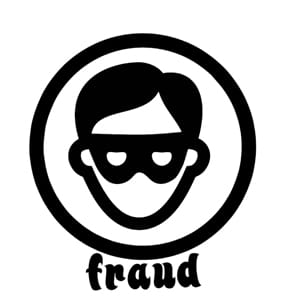
January 20, 2020
Scientific Research Fraud For Fun And Profit
By Michael D. Shaw
Legendary criminal Willie Sutton was once asked why he robbed banks. His reply, which became an instant classic, was: “Because that’s where the money is.” Of course, there’s plenty of money ripe for the taking in other places, and most of these are connected to government. There was the savings and loan crisis; there still is Medicare fraud ($52 billion in 2017); and there most certainly is scientific research fraud.
For the perp, the biggest advantage of scientific research fraud is that it is seldom punished, and even when it is, the likelihood of actual criminal penalties is very small. That’s because the grant recipients (usually universities) have every incentive to hide such misconduct, and sometimes the funding agencies would just as soon cover up the whole mess. The Feds spent around $177 billion on research in 2018, and these numbers tend to increase annually. Although a study to prove this will never be done, I believe that at least half of that money is being wasted.
Surely, such an analysis would be subjective, and would necessarily expose the unique sort of welfare system now in place for academic scientists, and their handlers—the universities themselves. As it is, these institutions are already subsidized by the Feds via the Student Loan program. Tuition can (and usually does) increase every year, but no worries, the Feds will pick up the tab. Bear in mind that pointless research is one thing, flat-out fraud is something else again.
This Wikipedia entry will give you an idea of the extent of the problem. Related to this is the matter of retracted scientific papers. Papers are retracted when errors are discovered in methodology or conclusions, and most often explained away as “honest mistakes.” Sometimes, plagiarism occurs. And don’t forget the key complicating factor: Did real fraud occur or was it just an honest mistake? Full marks if you see the analogy between this and Don Poldermans, his research underpinned errant guidelines that may have caused 800,000 deaths.
In a celebrated case, a lab tech at Duke University falsified data to make her research directors look good, and those profs played along with it. A few years earlier, Duke was involved in another scandal, involving cancer researcher Anil Potti, who engaged in research misconduct involving six grants. This work was published in prestige journals, and one wonders about editorial standards—but that is a huge topic unto itself. Duke also settled lawsuits with the families of eight cancer patients who participated in clinical trials based on Potti’s discredited work. Although Potti said that he would never do federally-funded research again, his penalty was only to be barred for five years.
The Poldermans and Duke cases got plenty of publicity, but think of all the other cases that didn’t. In fact, a 2016 paper entitled “The Essential Need for Research Misconduct Allegation Audits” comes to the astonishing conclusion that “Nearly 90% of allegations of biomedical research misconduct in the United States are dismissed by responsible institutions without any faculty assessment or auditable record.” Moreover, there are official congressional complaints that penalties for research misconduct are light, and related grant funds are not often recovered.
A glaring example of such an institutional cover-up occurred at Florida State University with criminology professor Eric A. Stewart. Five papers based on Stewart’s data were retracted, and there is credible evidence to suggest that fraud was committed. Yet, FSU declined to pursue a formal investigation.
Truth be told, academic scientific research is a big mess and chock full of scandal—with no good remedy in sight.
